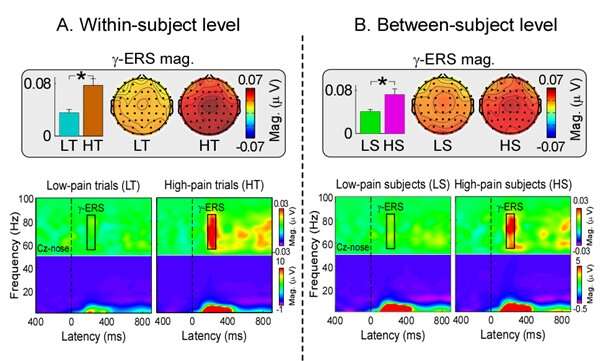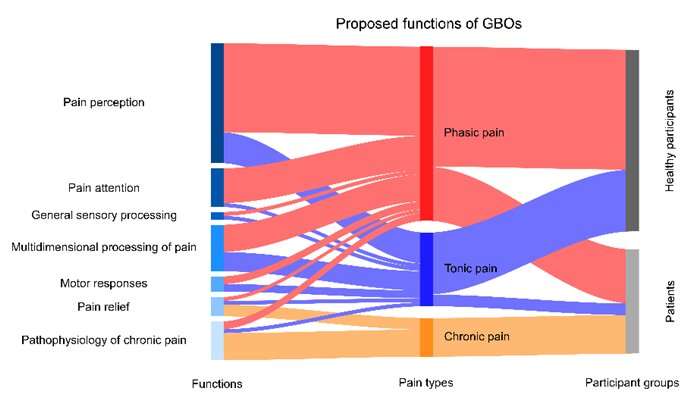This article has been reviewed according to Science X's editorial process and policies. Editors have highlighted the following attributes while ensuring the content's credibility:
fact-checked
trusted source
proofread
Pain-related gamma-band oscillations reflect pain perception

When you go to the doctor, do you feel that your pain is accurately assessed? The doctor may ask you to describe your pain verbally or to fill in a questionnaire. Traditionally, these are the only ways available to assess pain because other people cannot directly share your pain experience. However, these methods can often be unreliable and biased. Many studies have therefore attempted to objectively assess pain using neural responses.
A new study led by Dr. Hu Li from the Institute of Psychology of the Chinese Academy of Sciences has shown that pain-related gamma-band oscillations (GBOs) can objectively reflect an individual's perception of pain, but there are different "types" of GBOs under different circumstances.
GBOs, the brain waves in the frequency range of 30 to 100 Hz, are one of the most selective biomarkers of pain perception. Previous studies by Dr. Hu's research team have already shown that phasic pain-evoked GBOs can not only encode moment-to-moment pain variability within individuals, but also predict pain sensitivity between different individuals, in both humans and rodents. However, previous publications have also reported substantial heterogeneity in GBO characteristics and functions, and this heterogeneity and its sources have not been clearly described and explored.
To address these issues, Dr. Hu's research team conducted a systematic review and meta-analysis to characterize the signal characteristics and summarize the functional significance of GBOs. They found that pain-related GBOs may reflect pain perception in healthy humans, and that higher frequency GBOs are elicited by phasic pain than by tonic pain and chronic pain—a finding that is consistent across different species (i.e., humans and rodents).

In addition, phasic pain-evoked GBOs appeared to have different neural origins from non-phasic pain-evoked GBOs. While GBOs induced by phasic pain were more centrally distributed, suggesting a sensorimotor origin, GBOs induced by tonic and chronic pain were more frontally distributed over the prefrontal cortex.
Moreover, Dr. Hu's research team summarized almost all the major functions of GBOs, which differed among phasic, tonic, and chronic pain, based on previous studies. These findings suggest that pain-related GBOs should not be considered as a single entity.
This study not only supports GBOs as candidate pain biomarkers, but also provides a systematic description of the heterogeneity of GBO characteristics and functions. Furthermore, this study could serve as an important reference for follow-up research, and lay the foundation for clinical applications of GBOs, which will facilitate the objective assessment and precise treatment of pain.
The paper is published in the journal Neuroscience & Biobehavioral Reviews.
More information: Zhenjiang Li et al, Gamma-band oscillations of pain and nociception: A systematic review and meta-analysis of human and rodent studies, Neuroscience & Biobehavioral Reviews (2023). DOI: 10.1016/j.neubiorev.2023.105062




















